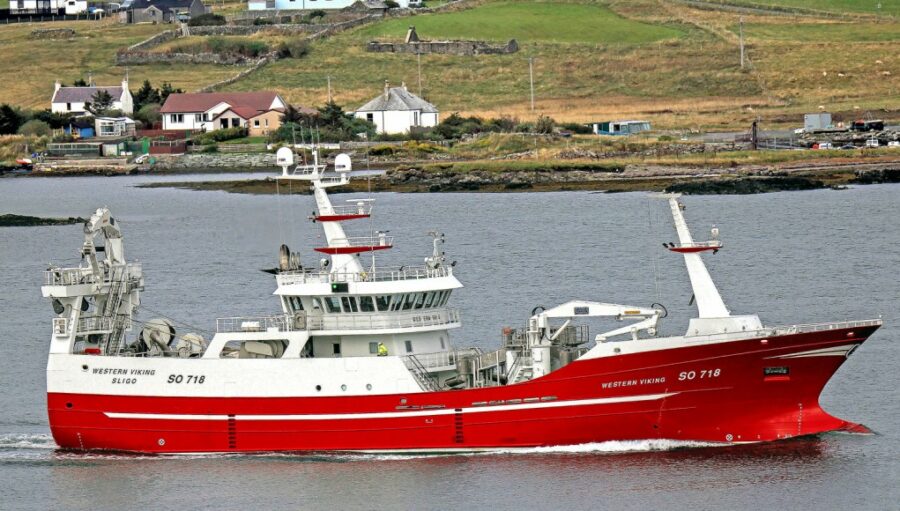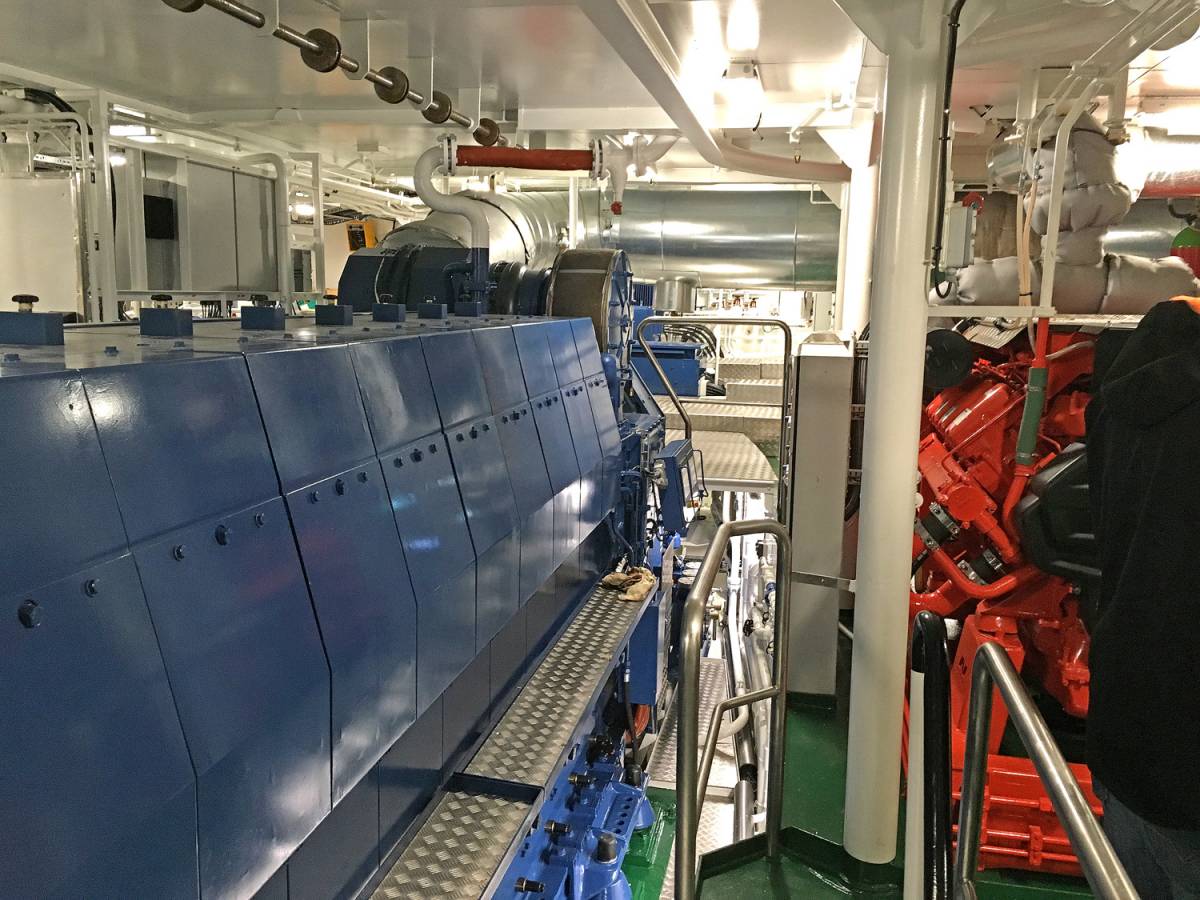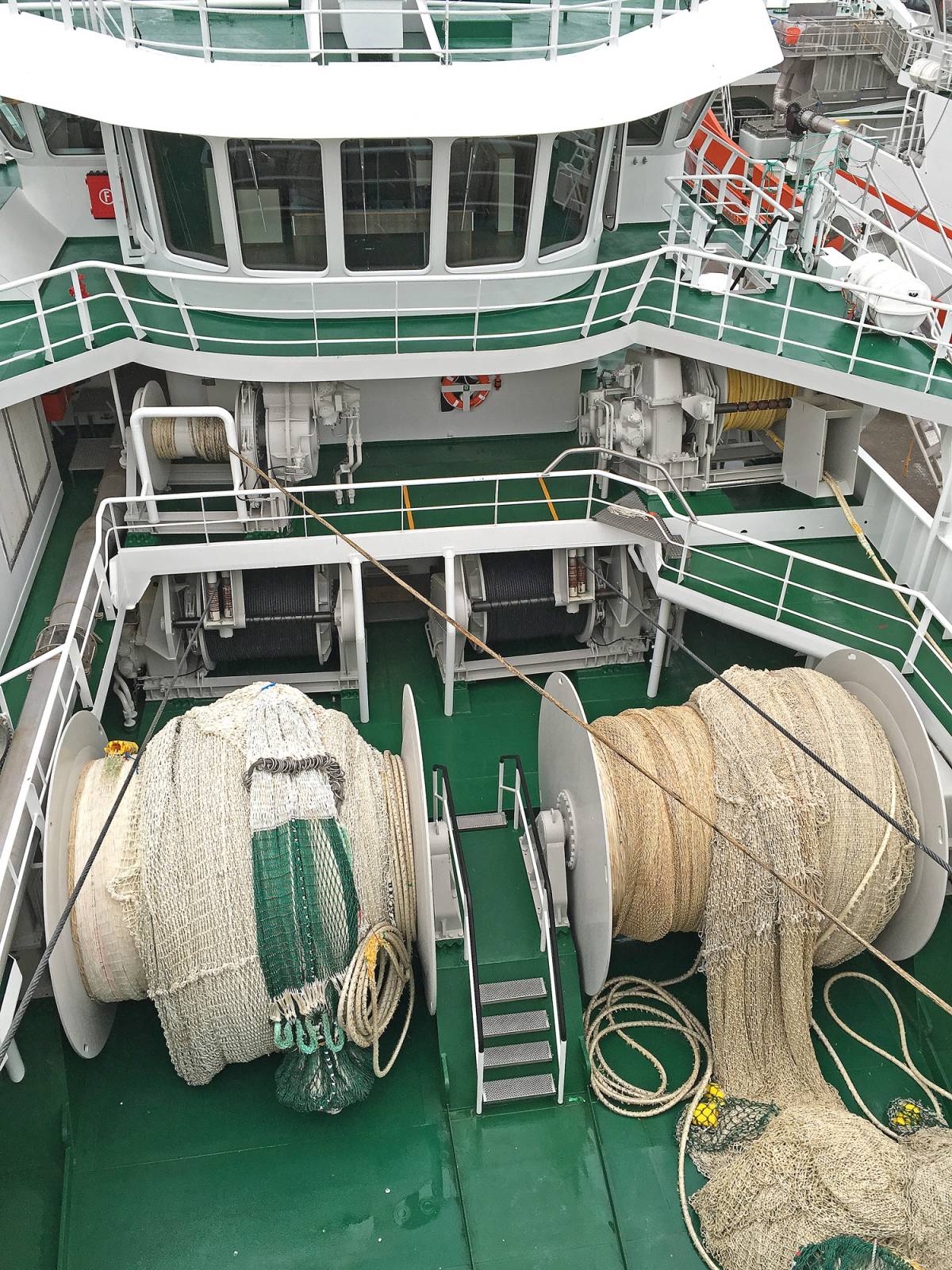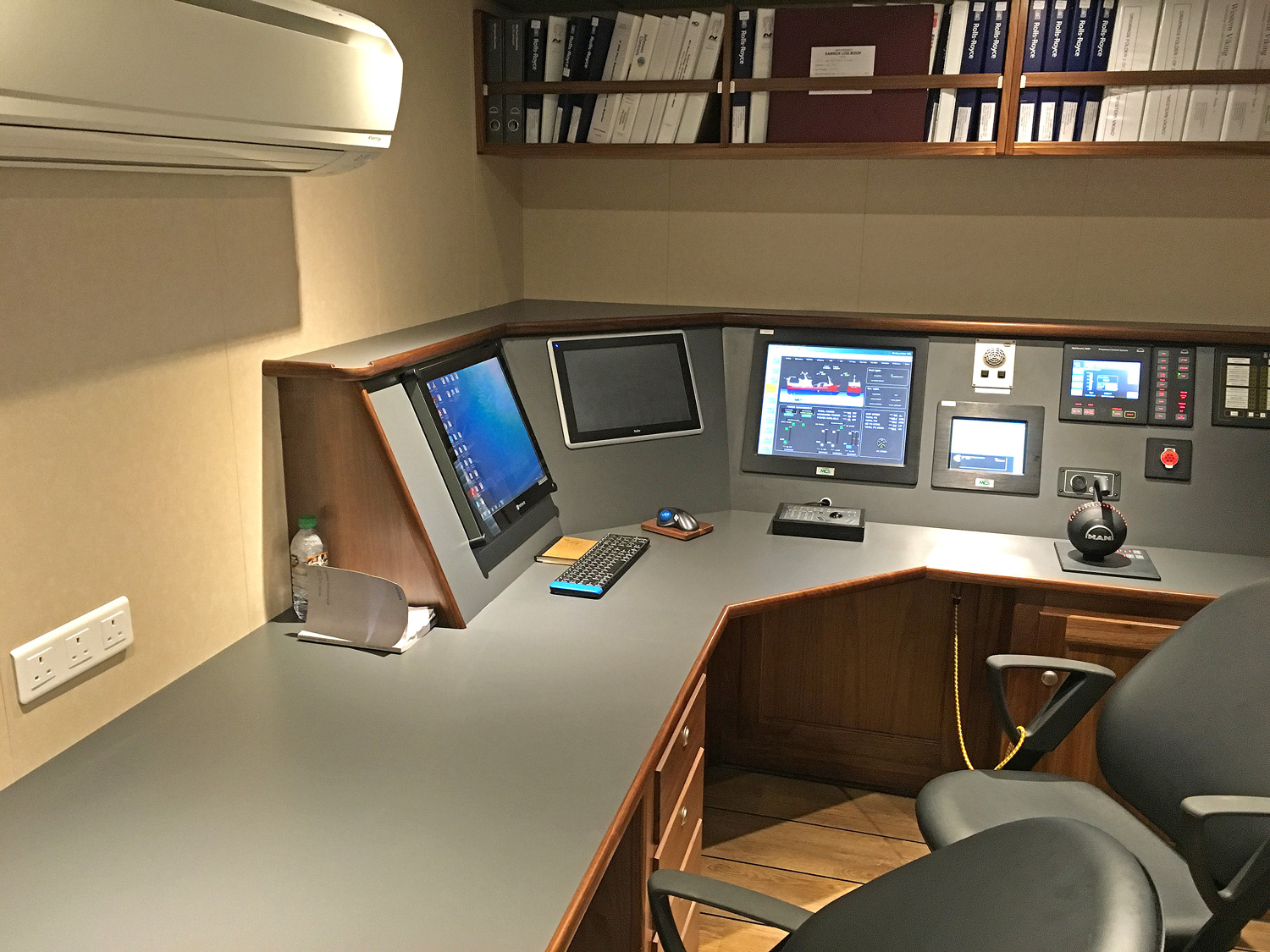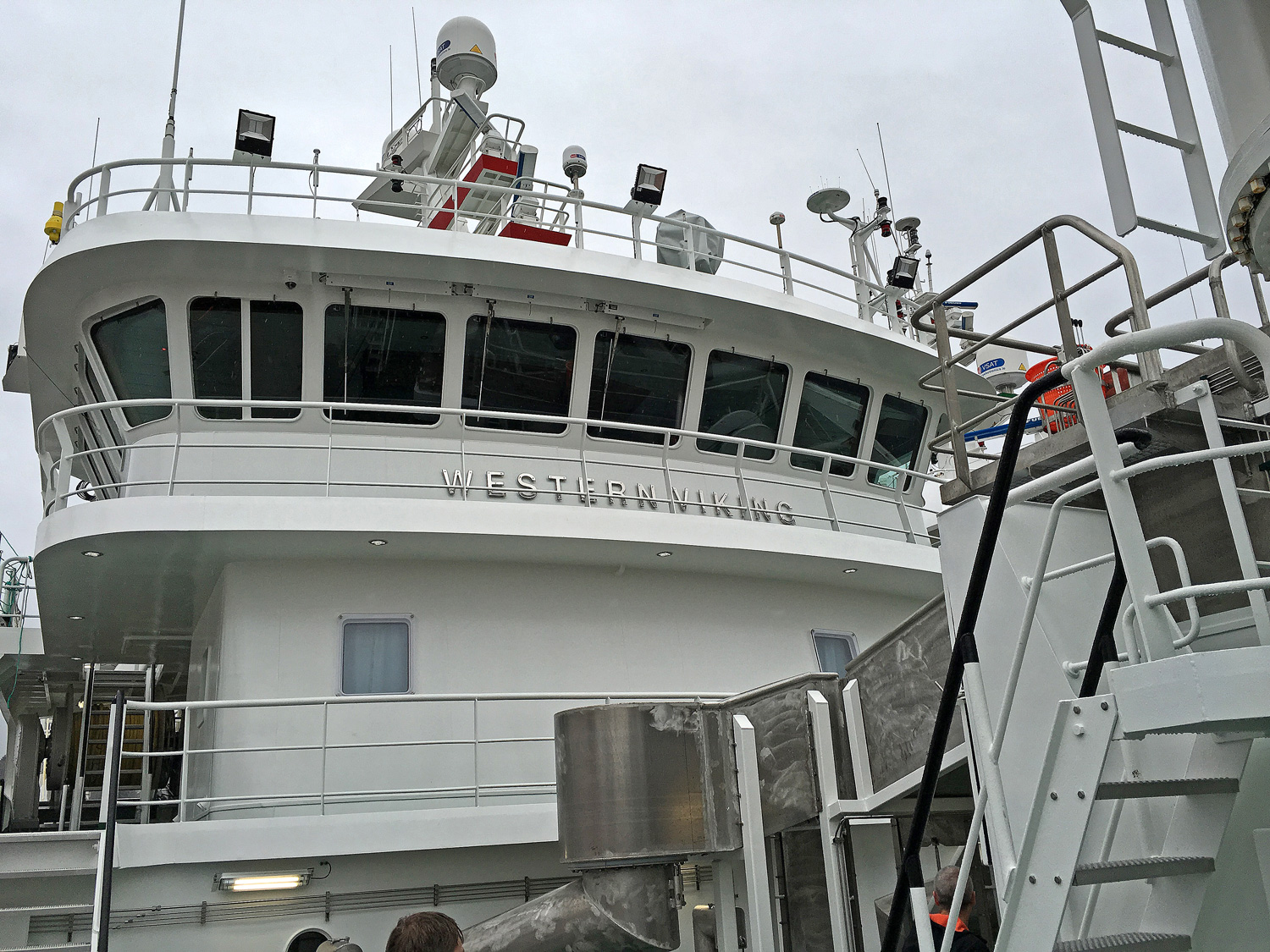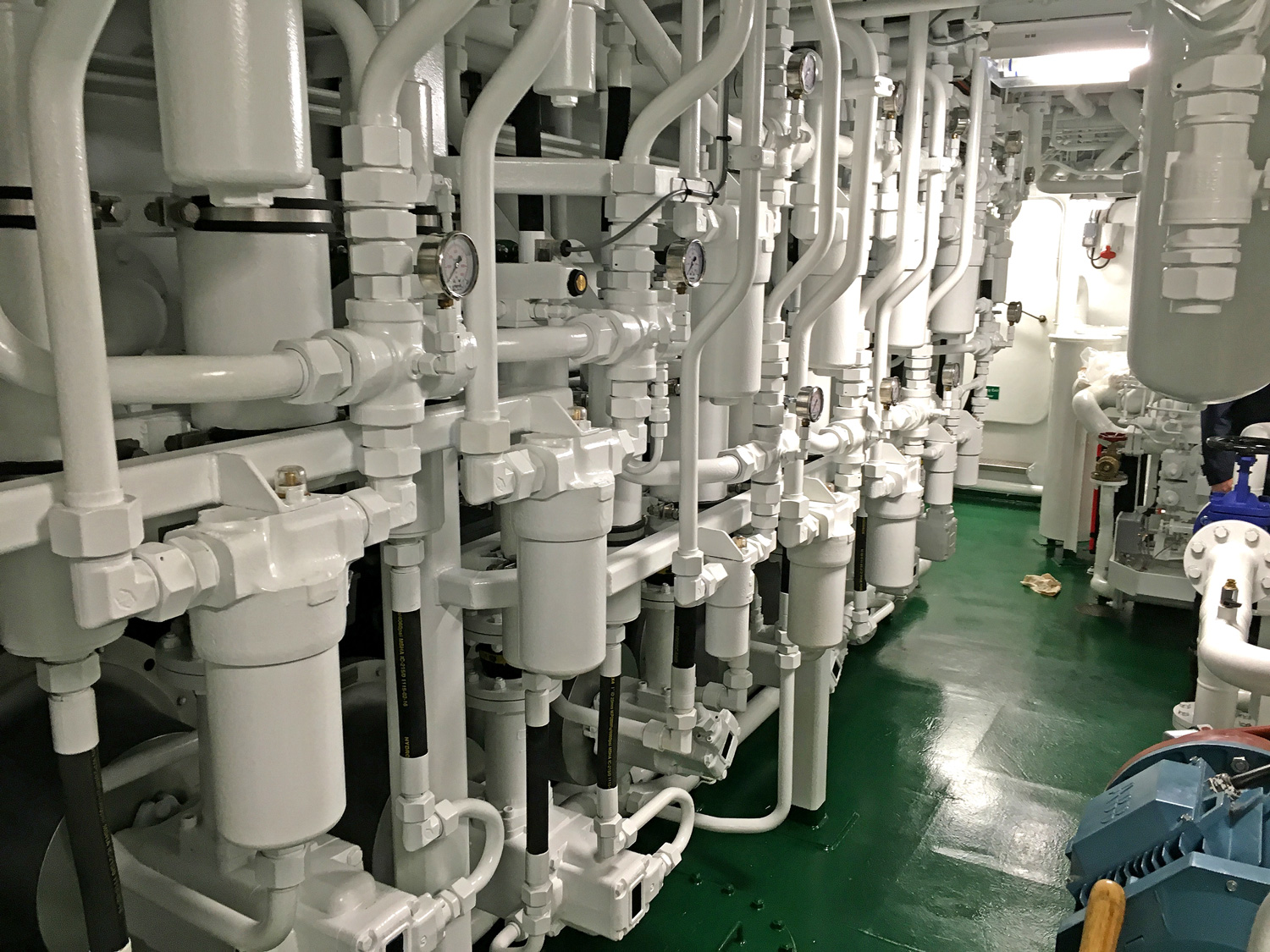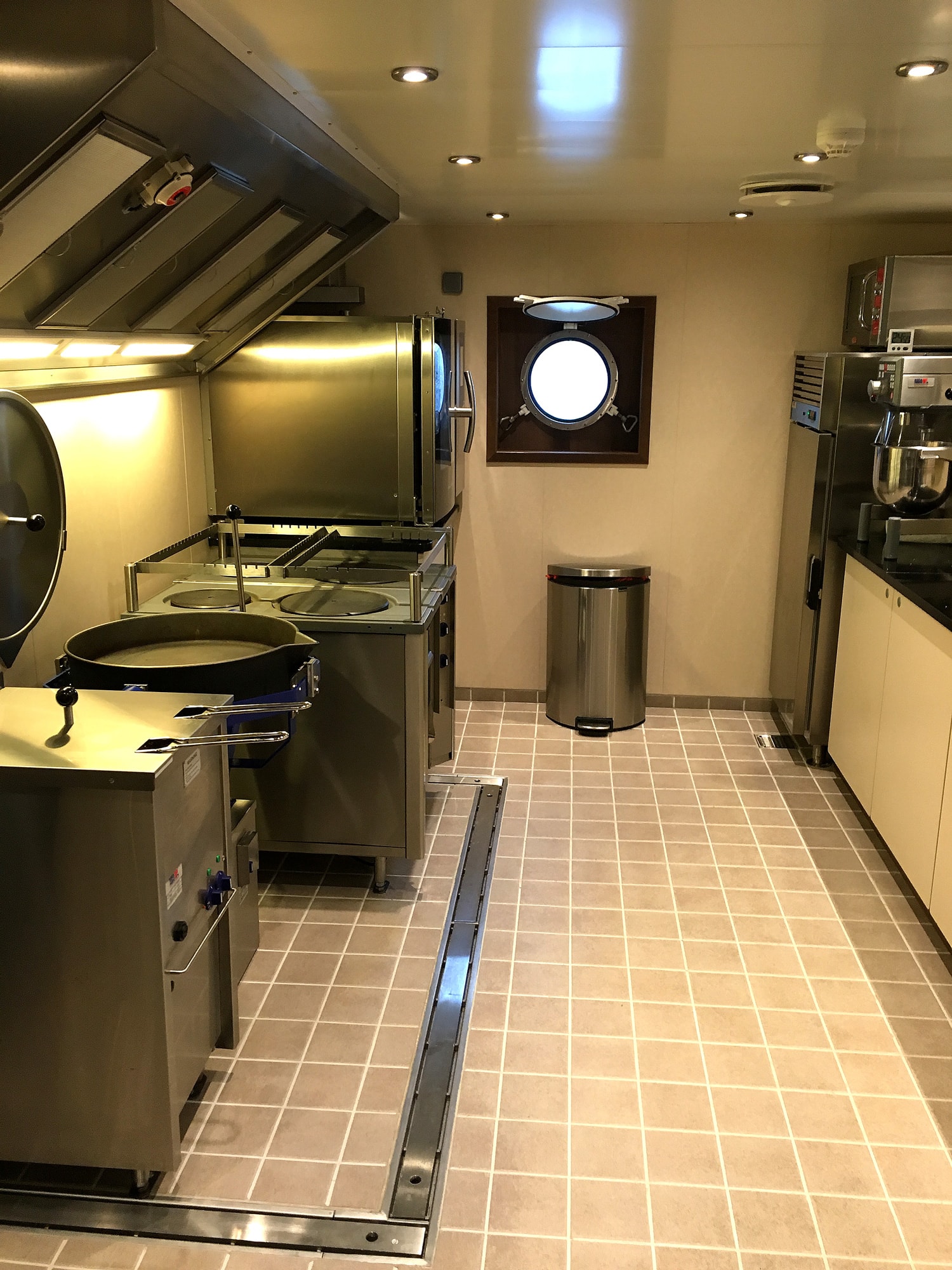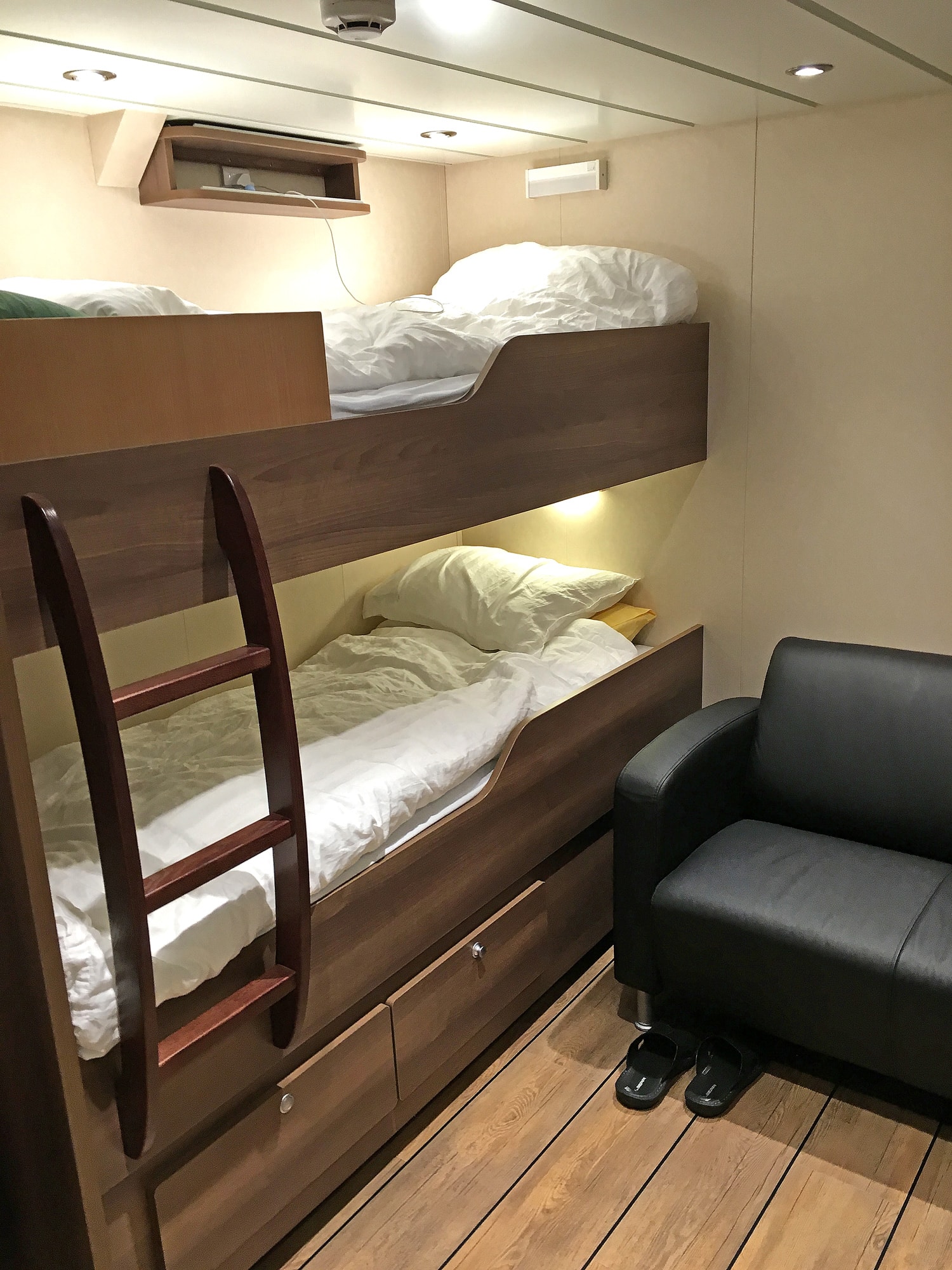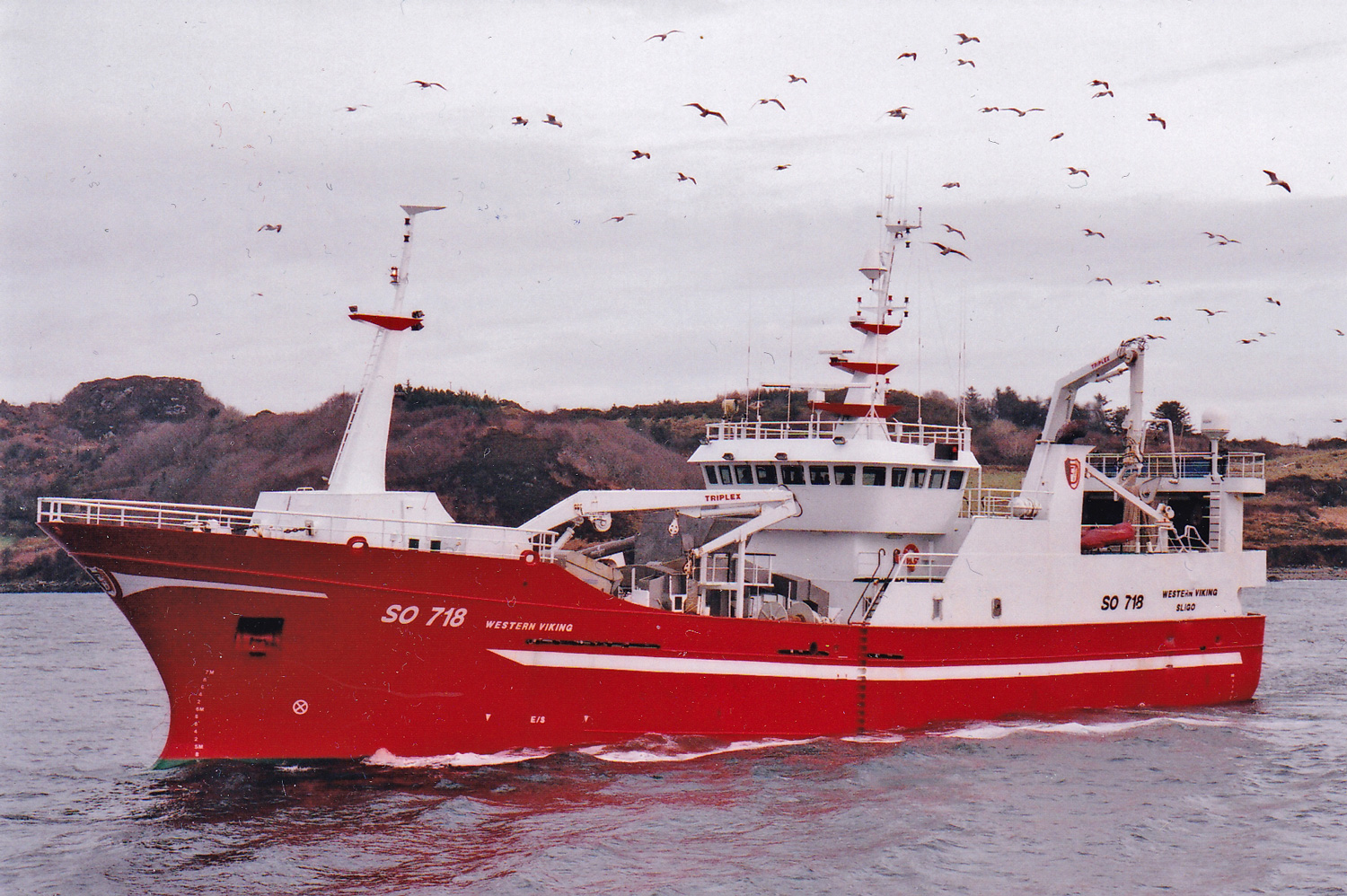Co Donegal skipper Enda Doherty and the crew of the new Killybegs midwater trawler Western Viking SO 718 quickly started to prove the fishing credentials of the 56.5m vessel, built to an in-house design by Karstensens Shipyard at Skagen, Denmark, reports David Linkie
Above: Western Viking departing Lerwick harbour after landing her first catch of mackerel. (Photo courtesy of Ivan Reid)
Western Viking is the third pelagic vessel of the same name that Karstensens Shipyard has built for Frank Doherty Premier Trawlers of Kincasslagh, Co Donegal. The first, a 48m vessel, was delivered in 1997, eight years before her replacement was also built at Skagen.
Since arriving at Killybegs two months ago (Fishing News, October 15), Western Viking lost no time in heading away again to fish mackerel in the North Sea. After the first shot of fish (650t), taken southeast of Sumburgh Head, was discharged to Shetland Catch in Lerwick, Western Viking landed her next three catches to local processors in Killybegs.
A run of fairly fresh early winter weather provided an early opportunity for Western Viking to prove both her fishing and seakeeping capabilities in some typically testing late autumn conditions, when skipper Enda Doherty reported that the boat, together with the onboard systems and fishing gear, performed well from the first tow.
That Western Viking hit the ground running is not surprising, given the fact that, apart from recent developments in engine/propulsion technology and hull design, the vessel is broadly similar to the previous 51m vessel of the same name, which earlier this year was renamed Stefanie M N 718 after being bought by Kilkeel skipper Stephen McCullough. The most significant difference between the new Western Viking and her 10-year-old predecessor is that catches of pelagic fish are pumped aboard over the stern, rather than forward of amidships on the starboard side.
Rapidly becoming a common characteristic on modern pelagic vessels, pumping over the stern enables a vessel to continue to dodge up into the weather while the lifter section of the brailler is attached to the fish pump, without the need for the boat to come round on the gear and take the weather on the broad. This ensures that hauling and pumping is a continual process, from the doors coming up, to taking the bag back aboard after the catch has been pumped aboard.
Sailing with a crew of 12, skipper Enda Doherty expects to follow a similar pattern of singleboat midwater trawling down to 200 fathoms on a seasonal basis, for a combination of mackerel and horse mackerel, that proved successful with the previous Western Viking, before landing to the most attractive market outlets, in terms of both location and price.
Designed in-house by Karstensens Shipyard, Western Viking has an overall length of 56.50m, 12.50m beam and a depth to shelterdeck of 7.80m. From the outset, particular attention was given to the midwater trawler’s underwater hull form, in order to achieve optimum levels of freeboard, stability, free running speed and towing capability across the full spectrum of load state, with minimum hull resistance and fuel consumption.
Of round bilge hull form, Western Viking’s hull was built to Det Norske Veritas, +1A1 Fishing Vessel: Ice-C class, at Riga Shipyard in Latvia, before being towed Skagen in mid-June where out-fitting was completed in only 4. months, in time for the early winter mackerel fishery. Hempel coatings were applied after Western Viking had been completely sandblasted and hotzinc sprayed.
In addition to the continuous main and shelter decks, Western Viking features long forecastle and boat decks.
A customary full-width deck casing is situated at shelterdeck level, and is accessed from either aft on the port side above the wet deck gear changing room, or on the vessel’s centreline into the main accommodation passageway. The central messroom is flanked on the portside by a stainless-steel galley, together with a customary walk-in dry provision store/freezer room, and a full-length lounge to starboard.
Finished to the customary high levels of comfort and practicality associated with pelagic vessels that can operate continually for several weeks at a time during peaks of seasonal activity, the accommodation areas on Western Viking are arranged over three decks. The internal furniture and fittings were supplied by Maritime Montering, Norway. Keeping with the tradition at Karstensens, the wheelhouse interior was fitted out by the yard’s own craftsmen, therefore ensuring the superior wheelhouse finish which Karstensens claims is the hallmark of Skagen-built fishing vessels.
Single-berth skipper and mate en-suite cabins, together with adjoining lounges, are arranged at boat deck level underneath the wheelhouse.
The main sleeping accommodation, comprising of seven single- and one twin-berth en-suite cabins, is arranged at main deck level extending from port of the vessel’s centreline to the starboard side, and located as far forward of the propeller as possible to ensure minimum noise levels. A large engineering store, together with the main hydraulic room and the engine control office occupy the remainder of the space on the portside of this deck.
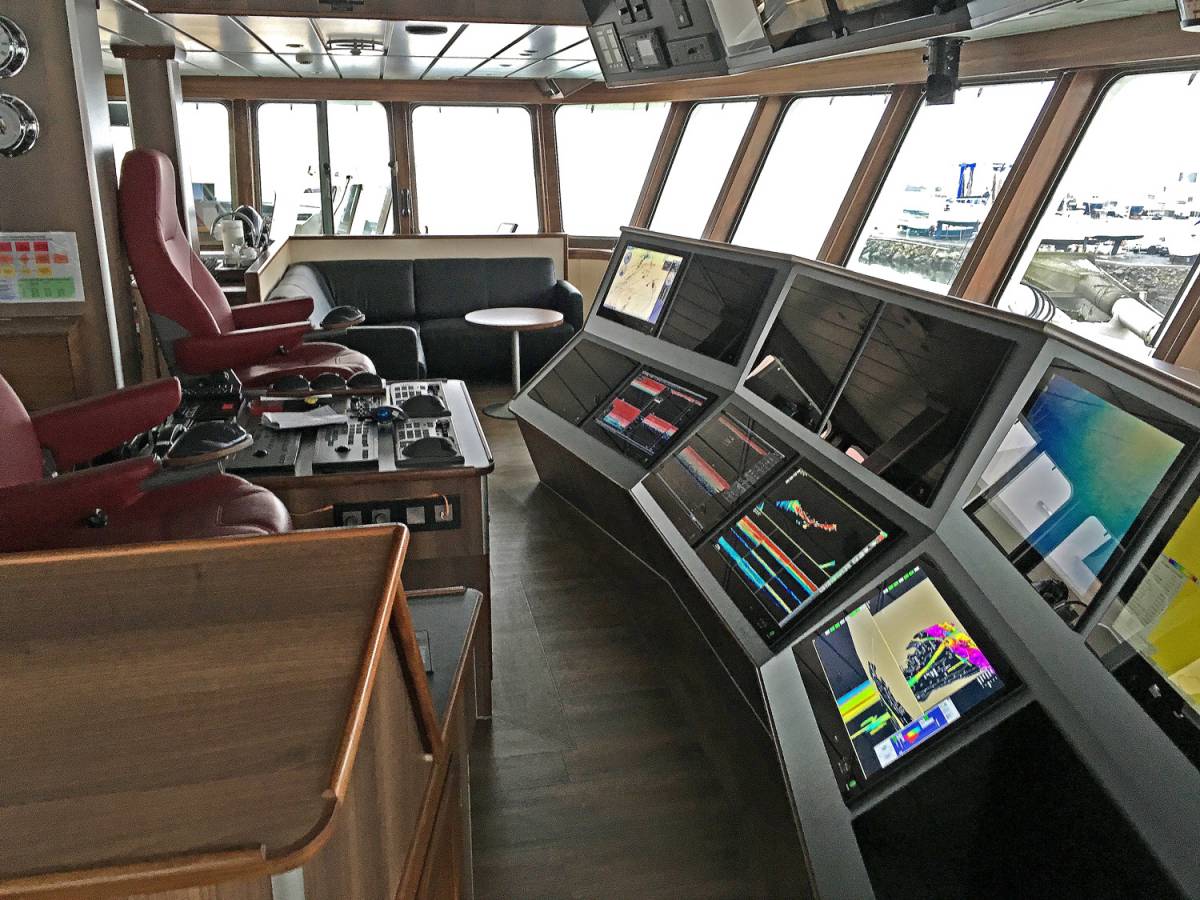
Barry Electronics supplied, installed and commissioned Western Viking’s hi-spec electronics package.
Norwegian hydraulic specialists Karm.y Winch AS supplied the full package of trawl equipment and cranes installed on Western Viking.
The main gear handling arena on the full length shelterdeck deck is protected by a wraparound boat deck that encircles the stern. This arrangement ensures that the crew have clear and immediate access to the midwater trawl gear from two levels when clipping on/off helper pennants/backstrops etc from the trawl doors.
Positioned abaft the wheelhouse casing to port and starboard on the shelterdeck, the 61t core-pull split-trawl winches are operated through a Karm 3001 auto-trawl system.
Carrying 1200m-lengths of 32mm-diameter Bridon Dyform trawl wire, supplied by Swan Net-Gundry, the winches give straight and parallel leads to the inboard Blue Line hanging blocks suspended within the underside of the stern gantry, to which companionways give ready access.
Midwater trawling is just one of the functions performed by the Karm 3001 Datatrawl system, which also delivers a full hydraulic management programme, controlling the array of electro/hydraulic aggregate power packs housed in the large pump room portside across Western Viking’s centreline at main deck level, in close proximity to where all of the trawl machinery is located on the decks above. Selected operating modes matched to working practices now established on Western Viking are programmed nto the Karm Datatrawl system. This ensures that the optimum combinations of hydraulic pumps are always available, allowing the operator to concentrate fully on activities on deck, of which the commanding trawl console located to port in the wheelhouse provides an excellent view.
Supplied by Swan Net-Gundry, Western Viking’s Helix self-spreading 1280m mackerel/scad/herring midwater trawls, rigged with 38-fathom braillers, are worked from two 61.5t net drums arranged either side of the vessel’s centreline at shelterdeck level. Each drum is served by the customary toe-end weight tracks that lead towards two hydraulically-operated stern doors fitted with rollers along their top edges.
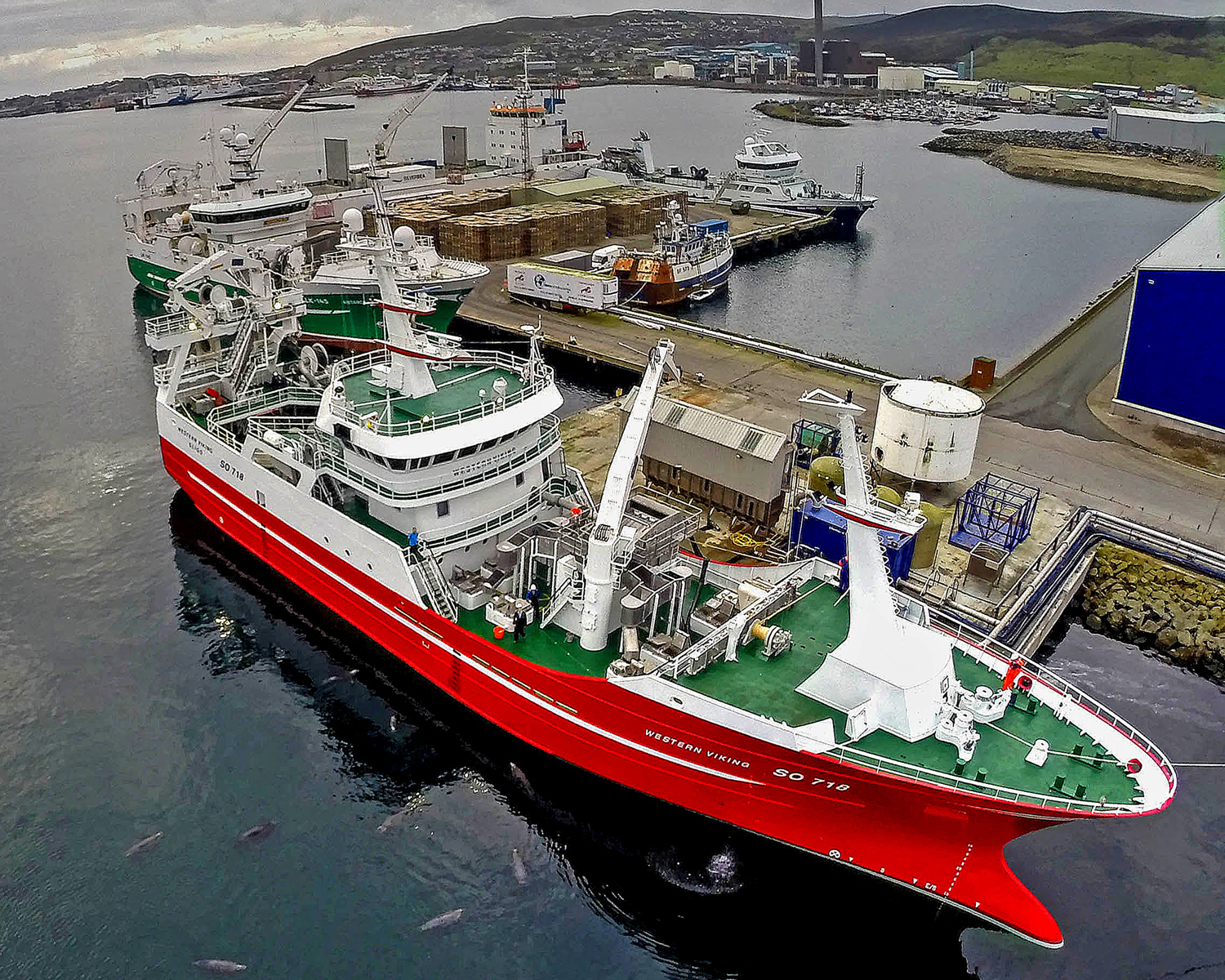
Western Viking landing her first shot of mackerel at Lerwick to Shetland Catch. (Photo courtesy of Ivan Reid).
A 60t life-line winch for handling the bag is mounted directly above the trawl winches on the boat deck. Reflecting the fact that Western Viking is rigged for pumping pelagic fish at the stern, a 37t tail-end winch is also located at this level towards the portside, for use when heaving the codend to the stern, before the sock is taken up and attached to the fish pump.
In addition to the main towing blocks, topline and tailend blocks are mounted on the underside of the trawl gantry, which is an integral part of the vessel’s stern construction. A Karm 5t/12m gooseneck crane mounted atop the gantry provides invaluable assistance when handling trawl gear and pumping fish.
In addition to the netsounder cable winch, Karm.y also supplied a selection of anchor, mooring and auxiliary winches located at strategic locations throughout the vessel.
The day lounge extends the full length of the deck casing on the starboard side.
Western Viking’s spacious and well laid-out engineroom houses a MAN main engine and twin Scania auxiliaries, which together with the rest of the machinery, are constantly monitored from the customary sound-proofed control room situated one deck higher on the port side.
Developing 2999kW @ 800rpm the MAN 9L27/28 propulsion unit turns a MAN 3800mm-diameter four-bladed CP propeller system, housed in a matching nozzle through a MAN 67VO55EV 6.01:1 reduction gearbox. Giving a maximum propeller speed of 133rpm, this centreline package enabled Western Viking to return an average top speed of 16.5 knots on engine trials off Skagen when sailing in ballast condition.
A gearbox PTO is used to drive a Leroy Somer 440V 3-phase shaft alternator, producing 2062kVA. Further electrical power is provided by 560kWe Leroy Somers generators driven by Scania DI16 075M auxiliary engines. A 100kW Sisu harbour genset is located in the forecastle. All three diesel generators were supplied by Nordhavn.
When shooting or hauling the midwater trawls, the gearbox PTO will be clutched-in, enabling the shaft generator to supply electrical power to the deck machinery via the hydraulic packs. This operational characteristic reflects the fact that during requirement for full power on the deck machinery, normally there will not be a similar demand for power on the main engine. During normal towing, when more engine power will be required, the shaft alternator can be disengaged, and electrical power will be supplied by either of the Scania gensets, which can be connected into main switchboard, controlled by Western Viking’s fully-integrated DEIF Power-Management-System. Western Viking also features a frequency converter for floating frequencies between 50Hz and 60Hz, designed to operate with optimum levels of efficiency and economy across all modes of vessel operation.
Two Rolls-Royce electrically-driven tunnel thrusters, in which skewed bladed propellers give optimal thrust (515kW) with low noise, assist vessel handling in confined areas and keeping station to fishing gear. A combination of Tenfjord AS steering gear and a Rolls-Royce high-lift flap rudder are fitted, to optimise Western Viking’s manoeuvrability under all operating conditions.
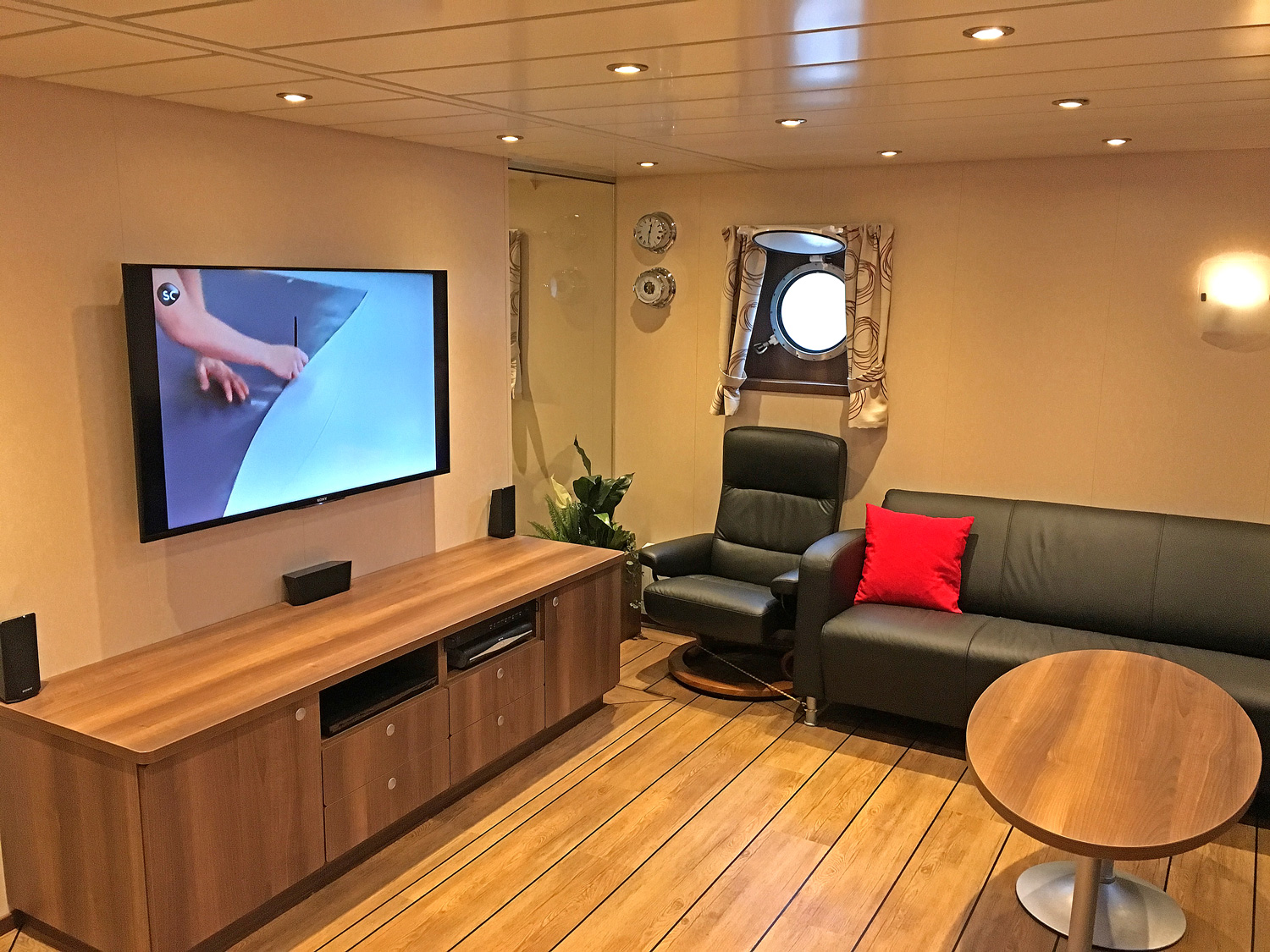
The day lounge extends the full length of the deck casing on the starboard side.
In keeping with the now well-established trend on pelagic vessels to install two separate ship management systems, all remaining systems onboard Western Viking, ie main alarms, engine controls, bunker tank sounding, navigation light controls, deck light control etc, are monitored and operated through a separate system from supplier Marine Control Services.
239,000 litres of fuel can be carried in a combination of double bottom and deep fuel tanks. Western Viking’s freshwater capacity is 33,000 litres. 47t of seawater ballast can be carried in the bulbous bow, enabling the vessel’s handling characteristics to be fine-tuned to the prevailing conditions.
With buyers of pelagic fish worldwide requiring ever-higher standards of catch quality, Karstensens liaised closely with Premier Trawlers to place a strong emphasis on the requirement to land a top-quality product into what is a highly competitive international market place.
Mounted on top of the pumping room at forecastle deck level, the seawater separation system, designed and manufactured in-house by Karstensen’s Shipyard, delivers pelagic fish into the selected combination of stainless steel chutes for delivery down into one of Western Viking’s eight RSW tanks, which have an internal volume of 1109m3. The forward and aft tiers consist of three tanks, with two amidships either side of a central pump room.
While this arrangement is primarily designed to ensure that the vessel settles on a level trim when carrying up to 1200t of fish, thereby increasing freeboard, safety and fuel efficiency, this central location also brings the added benefit of ensuring shorter and more equal pipe runs, and fewer internal pipes routed through the tanks. A central corridor runs between the insulated tanks at main deck level to give quick access fore and aft.
The desire for maximum catch quality is achieved by a fully interconnected pumping system that permits circulation for each tank to be managed individually, using the output of two Johnston Controls (York/Sabroe) RSW ammoniaoperated chilling systems that can operate separately, delivering 489,000kCal/h each, or be used as one common system enabling pelagic catches to be brought down to the desired storage temperature of -2ÅãC in often less than two hours, depending on the quantity of fish pumped aboard and the number of RSW tanks brought into use. The RSW system includes 2 x 460m.hr circulation pumps and 2 x 190 m.hr condenser pumps.
All controls for the pneumatic cylinders used to direct the flow of fish from the separator unit are housed in the RSW control room, the port side of which contains a dedicated wet room where selections of pelagic fish are sampled using a set of Marel M 2200 electronic scales, from which all information is automatically transferred to skipper Enda Doherty in the wheelhouse.
Pelagic catches are discharged ashore by one of the two Iras vacuum-pumping systems that incorporate two 2800-litre tanks and three 66kW compressors. Fish can be discharged by each system at around 200t per hour. The vacuum pumps and compressors are positioned at main deck level between the forward tier of RSW tanks, forward of the similarly-arranged RSW machinery situated between the middle and aft tier of tanks.
Delivery of the new Western Viking further strengthens Karstensens’ strong association with Ireland, where half of the pelagic fleet in Killybegs, Aine SO 734, Brendelen SO 709, Father McKee SO 708, Girl Stephanie G 190, Neptune SO 715, Paula D 165, Veronica D 95 (ex Gitte Henning L 349) and Western Chieftain SO 237, were built at the Karstensens shipyard, as was the Castletownbere-owned Mendahen S 135) (ex Silva Nova (FIN-V111).
2016 will see Karstensens deliver the 88m pelagic vessel Ruth and the 78m Beinur to Danish owners, followed by the 78m King Cross to Peterhead. A further four midwater boats, including two for north east Scotland and a new Aine for Killybegs, are scheduled to be completed in 2017.
Western Viking SO 718
DETAILS
Owners: FD Premier Fishing, Kincasslagh, Co Donegal Designer/Boatyard: Karstensens Shipyard Ltd, Skagen, Denmark
DIMENSIONS and CAPACITIES
Length overall: 56.50m; Length between PP: 50.40 m; Beam: 12.50 m; Depth moulded: maindeck: 5.30m; shelterdeck: 7.80m; Draft: 6.20m; Tonnage: 1135 tonnes gross; Fuel: 239,000 litres; Fresh water: 30,000 litres; Lube oil: 13,500 litres; Hydraulic oil: 6,000 litres
ENGINEROOM
Main engine: MN 9L27/38 of 2999kW @ 800rpm driving through a MAN67VO55EV 6.01:1 reduction gearbox to a MAN VBS1080 3800mm-diameter four-bladed CP propeller. Speed: 16.5 knots Shaft generator: Leroy Somner LSA 53.1 S80/6P 1650kW (2062kVA) @ 1200 rpm Auxiliary engines: 2 x Scania D116 075M 596 kW @ 1800 rpm driving 560kWe Stamford 415/3/50 generators: AGXO Sisu auxiliary 125kWe Norhaven harbour/emergency genset Bow/stern thrusters: 2 x Rolls-Royce KaMeWa TT1300 electrically-driven of 515kW Fuel/lube oil separators: Alfa Laval PA 605/PA 615; Bilge, ballast, sewage, main engine/RSW cooling and engine fuel transfer pumps: Bombas Azcue; Sewage vacuum system: Jets; Box coolers: Bloksma (freshwater cooled); Bilge ejectors: Ellehammer
DECK MACHINERY
Supplier: Karm.y Winch AS, Kopervik, Norway and Sea Quest Ltd, Killybegs, Co Donegal 2 x split trawl winches 61t first layer pull with capacity for 2250m 34mm-diameter trawl wire; Karm 3001 computer trawl system; 2 x 28m3 net drums 61t; 1 x 60t topline winch; 1 x tailend winch 36.8t; 1 x 3.2t net sounder cable winch 4000m x 11mm-diameter armoured netsounder cable; 2 x 6t mooring winches; 1 x anchor winch 12t; 1 x 5t/12m gooseneck arm netstacker crane c/w 5t roller and 5t winch; 1 x 4t – 15m gooseneck arm fore deck crane; 1 x Sea Quest 18in fish pump; 1 x hydraulic hose reel 1.4t c/w hydraulically-operated skid; 1 x fish hose reel 3t 80m of 18in-diameter fish hose
FISHPUMPING/STORAGE
Fishpumping system: 1 x Sea Quest 18in fishpump; Fish/seawater separator: Karstensen Shipyard; RSW cooling plant: 2 x Johnson Controls (York/Sabroe) 2 x 489Kcal/h c/w 2 x 460 m./hr circulation pumps and 2 x 190m./hr condenser pumps; Vacuum discharge system: IRAS 2 x 2800-litre vacuum-pumping systems c/w 3 x 66kW compressor units
ELECTRONICS
Suppliers: Barry Electronics, Killybegs, Co Donegal, Ireland
Fish detection Simrad SU-93 low-frequency (20kHz/30kHz) and Simrad SH-90 high-frequency (114kHz) omni-directional sonars; WAASP multibeam sounder; Simrad ES-70 dual-frequency (with 38/120kHz split-beam transducers); Furuno CI-68 Doppler current indicator (244 kHz); Simrad FS-70 Trawl sonar (330kHz vertical scan/200kHz sounder/40kHz sensor receiver) c/w 6 x 70Khz catch sensors; Marport MR net monitoring system c/w quad hydrophone receiver; Marport TE150W tunnel sensor and Marport catch sensors; Marel M2200 electronic fish-sampling scales c/w fibre optic link to wheelhouse PC
Navigation 2 x Furuno FAR 2117 X Band radars; Furuno GP-170 GPS navigator; Furuno GP-33 navigator; MaxSea Time Zero 3D chartplotting system; Olex 3D bottom-mapping system; Simrad AP70 IMO autopilot system; Furuno RD33 Heading repeater; Furuno SC-50 GPS compass; Simrad GC80 Gyro compass; Furuno FA-150 AIS system; Ultrasonic wind system; Furuno BR500 watch alarm
Communications Furuno FS-1575 MF/HF DSC RT; ICOM M-801 MF/HF RT; Furuno FM-8900 DSC VHF; Furuno PR-300 GMDSS power supply; 2 x Sailor 6210 VHFs; 2 x Furuno LH-6000 Loudhailer systems; Phontech 10-station ships intercom system; Furuno NX-700 Paperless Navtex; BEL VSAT KU Band satellite system; BEL SAT Fleet One phone; SeaTel Satellite TV system; HD CCTV system
FISHING GEAR
Net Supplier: Swan Net-Gundry, Killybegs – 1280m mackerel/scad single boat self-spreading midwater trawl; two 38m brailers; Trawl doors: Swan Net-Gundry, Killybegs Thyboron 8.5m. pelagic trawl doors 1900kg; Warp supplier: Swan Net-Gundry, Killybegs – 2 x 1200m x 32mm-diameter Bridon Dyform trawl wire
ACCOMMODATION
9 x single-berth and 1 x double-berth en-suite cabins
GENERAL
Engine controls: MAN electronic; Life-saving equipment: Viking and Noreq; Paint: Hempel; Steering: Rolls-Royce Tenfjord SR 642 110kNm; Wheelhouse seats: Nor-Sap; Windows: van Wingerden; Wipers: Wynn
SeaQuest fish pumping
SeaQuest Systems Ltd of Killybegs supplied the fish pump and full package of associated deck machinery that Western Viking’s crew uses when taking pelagic fish onboard at the stern.
A key feature of the system is an innovative hydraulically-operated moveable skid, which allows the hose reel to be extended out over the stern when pumping; an arrangement that leaves the fish hose completely clear of the vessel when pumping is in progress.
On completion of pumping, the fish hose reel and its mounting skid is retracted 2m inboard along the boat deck. By being of pump-through design, the fish hose reel is easily and quickly connected with a short section of rubber hose to the rigid aluminium piping that extends from the quarter along the port side of the superstructure casing to the seawater separator system, located on top of the pumping control room forward on the shelterdeck.
Using an 18in SeaQuest pump fitted with a trawl swivel, pelagic fish can be pumped aboard at a rate of some 400t an hour.
In addition to the deckmounted pumping equipment, SeaQuest Systems Ltd also supplied the requisite main hydraulic power packs, along with 80m of 450mm-diameter fish hose (10mm thick) and 80m of hydraulic hoses.
Barry Electronics wheelhouse package
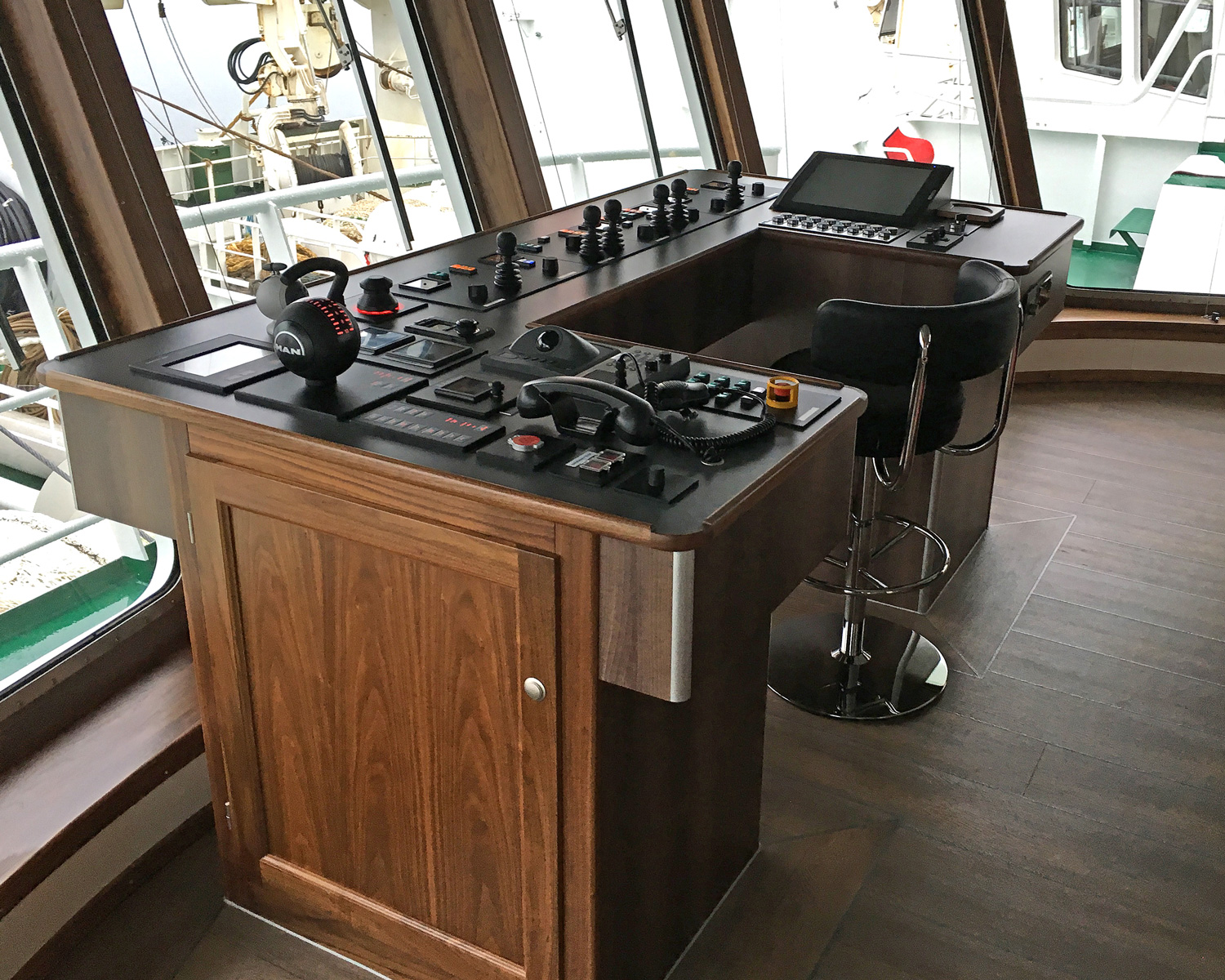
The wheelhouse trawl console provides a commanding view of fishing activities at the stern of Western Viking.
The comprehensive array of electronic equipment housed in Western Viking’s immaculately finished wheelhouse was supplied, installed and commissioned by Barry Electronics Ltd. The Killybegs company is well-used to completing major contracts in Karstensen’s Shipyard, having been involved in all the many Irish new-builds there over the past decade and more.
Most of the electronics are housed in a streamlined low console on the starboard side, the freestanding forward side of which provides immediate access to the electronic units and cable looms via hinged panelled doors.
When searching for marks on the grounds, the first signs of pelagic fish are detected by Simrad SU-93 low frequency (20kHz/30kHz) and Simrad SH-90 high frequency (114kHz) omni-directional sonars.
The sonars are interfaced to a variety of sensors, including the Furuno current indicator CI-68, allowing accurate fish tracking in all conditions.
Vertical sounding is performed by Simrad ES-70 sounders displaying echoes, fish size and abundance estimation information from 38Khz and 120Khz split beam transducers. A WAASP multibeam sounder is also installed.
Western Viking is also equipped with a Simrad FS-70 trawl sonar and a Marport MR net monitoring system c/w hydrophone receivers and Marport tunnel and catch sensors.
Course direction is controlled by a Simrad AP70 IMO autopilot system interfaced to a Simrad GC80 gyro and Furuno SC-50 GPS compasses. Furuno GP-170 and GP-33 GPS receivers relay positioning information to MaxSea Time Zero and Olex plotting systems. The Olex chart plotter includes 3D seabed-mapping and ground discrimination, interfaced through the Simrad split-beam ES-70 sounder.
Two Furuno (FAR-2117X and FAR-2137S) BB radars are interconnected for switching and displaying in plotter mode with radar overlay.
Read more from Fishing News here.

